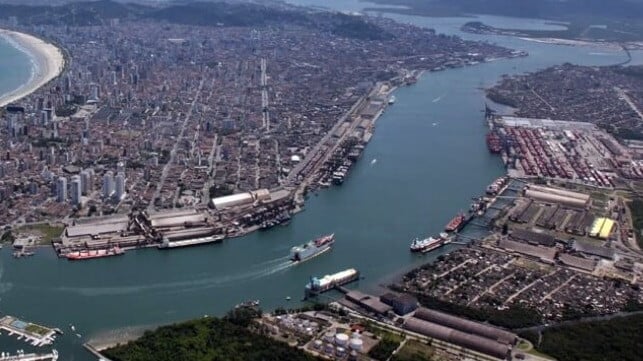Brazil’s Ag Sector Plans for Export Boom as China Pivots Away from U.S.

The re-ordering of global trade, escalated by the astronomical tariffs between the U.S and China, has left some countries with significant export advantages. Brazil is already showing signs as an early winner, with its port sector reporting increased demand. A strong preference for the Brazilian soybean has started to appear in China, historically a large-scale buyer of American soy.
According to Reuters, China is expected to receive about 3 million tons of U.S soybeans in April-May, which its state stockpiler Sinograin purchased earlier this year. However, due to China’s new 125 percent tariffs on American goods, the shipment is likely to attract higher duties and possibly sell at a discount due to cheap competition from beans from Brazil.
“The pressure of the soy crushing margins on Chinese industries will likely change the country’s import dynamics. As these margins come under negative pressure, China tends to slow down the pace of imports and rely on domestic stockpiles- as seen in the previous trade war in 2018,” said the Brazilian National Association of Cereal Exporters (Anec) in its monthly report this week.
Anec predicts a potential export boom for the Brazilian soy this year of up to 110 million tons, representing a historic record for Brazil. In the first quarter of 2025, Brazil has already recorded shipments of about 27 million tons, a four percent increase compared to last year. Currently, China accounts for 77 percent of Brazilian soy exports.
The uptick in export volumes is also visible in the port sector data, with Brazilian ports moving 12.4 million tons of containers in February- the highest volume ever recorded, according to the National Agency for Waterway Transportation (Antaq). This figure represents a 9.26 percent increase compared to the same period in 2024. Of the total, around 70 percent (8.6 million tons) was from long-haul shipping, while the remaining 30 percent (3.7 million tons) was from coastal shipping (cabotage). Some of the major commodities behind the increase include corn, bauxite and fertilizers. Other shipments which rose by a significant measure include poultry products. Brazil’s exports of fresh and processed poultry reached 476,000 tons in March, up 19 percent from a year earlier, according to the Brazilian Animal Protein Association (ABPA).
In anticipating higher export volumes, some ports are already investing in additional capacity as well as diversifying operations. Porto do Acu, located in the state of Rio de Janeiro and Brazil’s top oil export port, has said that the tariff-induced distortions in global trade has given the port an incentive to expand facilities for agricultural and mineral commodities.
“When threats started, demand started to rise. We are in a really good position here,” João Braz, the port’s logistics director told Bloomberg.
Brazil’s agricultural shipments are also a factor in China’s interests in the Panama Canal. Chinese economist Li Xunlei has called for improving government ties in the Central American country in order to ensure strategic access to the waterway for China’s food shipments; 90 percent of the Brazil-to-China soy trade passes through the canal, he said in a recent paper.
Top image: Port of Santos (Agencia CNT / CC BY 2.0)
